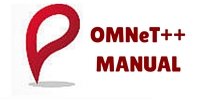Non-invasive human sensing based on radio signals has attracted numerous research interests and fostered a broad range of innovative applications of localization, gesture recognition, smart health-care, etc, for which a primary primitive is to detect human presence. Previous works have studied to detect moving humans via signal variations caused by human movements. For stationary people, […]
Read moreThis paper presents a polarization-controlled active antenna applied to BAN on-body communications. A primal objective is to achieve the enhancement of signal power, not only in downlink but also in uplink dynamic channels, between an access point mounted on the wrist and a sensor module attached to various locations on a human body. The proposed antenna is […]
Read moreBody sensor networks (BSN) have emerged as an active field of research to connect and operate sensors within, on or at close proximity to the human body. BSN have unique roles in health applications, particularly to support real-time decision making and therapeutic treatments. Nevertheless, challenges remain in designing BSN nodes with antennas that operate efficiently around, ingested or implanted […]
Read moreNear-Body Shadowing Analysis at 60 GHz
A numerical model of the fading of a receiver located near the user body at 60 GHz in an indoor environment is presented. The model is based on the indoor channel model IEEE 802.11ad. The results are presented for a receiver located in a zone from 5 to 30 cm away from the body. With the shadowing depending […]
Read moreIn this paper, we investigate a distributed beamforming problem to optimize energy efficiency (EE) in ultra-wideband (UWB) based implant body area networks (IBANs). To evaluate the impact of relay location on the EE, a relay location based cooperative network model is proposed, where multiple on-body relays are employed to assist an implant node to communicate with a BAN coordinator. With the proposed […]
Read moreIn this paper a novel method for synchronization and cell search in 3GPP LTE downlink (DL) system has been proposed. This method performs the symbol timing and physical-layer cell identity estimation in frequency domain with less complexity, utilizing the frequency domain properties of the primary and secondary synchronization signals. The primary synchronization signals have good orthogonal and […]
Read moreLTE-Advanced has exploited many state of the art technics to identify itself as the main 4G mobile communication system. Among others, Relay station (RS) serves as an important role of LTE-Advanced, which costs much less, consumes less energy, and has the basic function of base station (BS). RS is able to cooperate with BS in system […]
Read moreThe tremendous growth of machine-tomachine (M2M) applications has been a great attractor to cellular network operators to provide machine-type communication services. One of the important challenges for cellular systems supporting M2M terminals is coverage, because terminals can be located in spaces in buildings and structures suffering from significant penetration losses. Since these terminals are also […]
Read moreA simple planar monopole antenna structure is presented in this paper. The proposed antenna gives desirable performance in two band of frequencies ranging from 1.70-2.16 GHz and 3.7-3.9 GHz covering thirteen full LTE bands Bl, B2, B3, B4, B9, BIO, B25, B33, B34, B35, B36, B37, B39 and oneLTE band-B43 partially. The parametric study is incorporated to obtain […]
Read moreImproved PCFICH decoding in LTE systems
This paper studies control format indicator (CFI) estimation methods in 4G-LTE communication systems. CFI is an essential control signal in LTE, and must be correctly detected at the receiver to avoid degraded system performance. The standard method of CFI detection involves the use of the Maximum Likelihood (ML) estimation criterion. Unfortunately, ML decoding performance relies on accurate […]
Read more